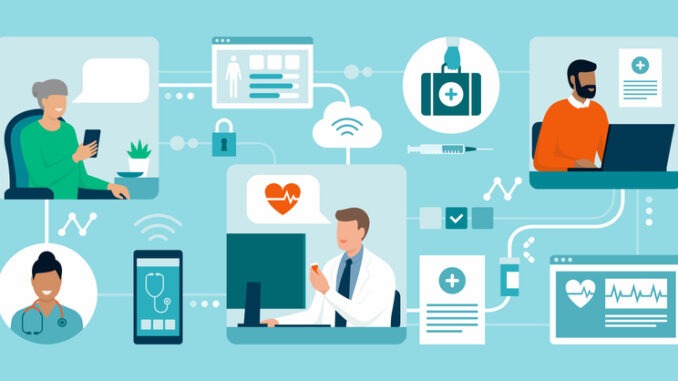
Jana Lloyd, UCLPartners’ national programme manager for proactive care frameworks (cardiovascular disease prevention), explores how primary care staff can be supported when using remote monitoring technology
CREDIT: This is an edited version of an article that originally appeared on Digital Health
The use of remote monitoring technology has become more common across the health service as a result of restrictions arising from the pandemic. By using remote monitoring technology, such as mobile medical devices like blood pressure monitors, healthcare staff can gather patient-generated health data outside of traditional health and care settings.
One of the most widely implemented examples of remote monitoring technology during the last year has been the use of pulse oximeters, which enabled home monitoring for people with COVID-19 and earlier detection and intervention for those who developed more serious complications.
Remote monitoring technology has fantastic potential to benefit both patients and staff but, with the increasing amount of tech available, its essential that healthcare staff feel comfortable using it.
At UCLPartners we worked with Care City to conduct a survey of primary care staff to understand what could support them in using remote monitoring technology, which elicited some interesting findings. Here, I’ll share the some of the learning from our work.
Be clear about what ‘remote monitoring technology’ means
The survey revealed a wide range of views about what ‘remote monitoring technology’ meant to the workforce. This ranged from primary care digital platforms (for example, eConsult, AccuRx, AirMid) to web resources and tools. This mixed understanding has implications for all training materials and how these are highlighted to staff.
Address barriers such as digital literacy, low confidence and data protection concerns
Participants felt remote monitoring technology could exacerbate health inequalities, as low digital literacy and low confidence were barriers to patients using the tech. At the opposite end of the scale, people with good digital literacy were far more likely to report a positive experience in using digital technology.
Questions were also raised about information governance and data protection as those with poor digital literacy had to rely on family and friends to use such technologies, forcing them to share information that they may not usually share. In addition, some of the respondent hesitance in taking up remote monitoring tools and training opportunities related to the fact that they perceived many digital programmes to be transient and short-lived. Enthusiasm was often tempered by concerns that the effort of implementing new technologies, even with demonstrable success, is often not rewarded with longer-term funding or sustainable commissioning plans.
Consider investing in patient education as much as staff education
A key theme from the survey was that unless adequate technical support and resources were provided for patients, alongside remote monitoring implementation, this could create unsustainable work for primary care staff. Participants described low digital confidence in some patients often translates into increased demands on primary care staff; the additional help and support needed for patients to use the tools can be frustrating for staff who are already stretched.
Give staff time to undertake training – and make it digestible
Participants frequently described the need to tailor training content, support and approaches for staff working in different roles; there was a divide, with clinical staff reporting being more in favour of remote digital technologies, whilst operational staff reported the tech as harder to become accustomed to.
Some participants noted that training sessions and learning opportunities aimed at staff are often held outside of working hours, or within their lunch breaks. While they welcomed the opportunity to learn, this expectation to attend outside of their contracted hours felt unfair and unsustainable. Blended learning models, bitesize learning with clear learning objectives, succinct learning summaries and quick view guides could all be beneficial – as would protected time for staff to dedicate to learning.
Invest in tech champions and support peer-to-peer learning
The final theme that emerged was on implementation science and coaching support. Participants reflected that when a member of staff wants to ‘champion’ digital tech there is a need for coaching and support. It requires time and energy from adopters to drive a technology project forward to successful completion; this cannot be underestimated. There is a risk that initial enthusiasm, and passion for the technology, may be lost when the project encounters challenges and difficulties.


Be the first to comment